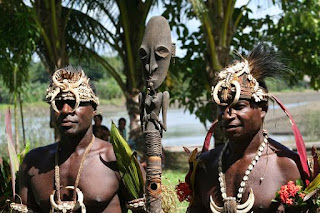Guinea culture people food and festivals
History of Guinea
Modern Guinea formed part of the Ghana Empire and was then incorporated into the Mali Empire, which dominated the region between the 13th and 15th centuries. Portuguese explorers arrived during the mid-15th century and over the next 300 years they, along with the British and the French, made Guinea the centre of a major slave trade.
In 1849, the French declared the Boke region a French protectorate. Then in 1895, the French incorporated the Boke province, the heart of the Guinea republic today, along with adjacent territory, into French West Africa. The region was a single entity comprised mostly of modern-day francophone West Africa, and governed from Dakar.
After the departure of the French political power was assumed by the Democratic Party of Guinea-African Democratic Rally. By 1983, the regime's extreme mismanagement and repressive behaviour had driven an estimated two million people into exile. When the president, Sekou Touré, died in 1984 the army immediately seized power in a bloodless coup led by Colonel Lansana Conté.
Guinea Culture
Food and Economy
Food in Daily Life.An array of taboos and customs affect food consumption. It is impolite to eat while walking. A visitor who arrives in a compound while a meal is in progress will be invited to join in the meal. Food often is served in large communal bowls and eaten with spoons. In large families, the men will eat from one bowl and the women from another.
The main meal typically is served in the middle of the day and consists of a sauce placed over a staplecarbohydratesuch as rice or millet. The sauce and staples differ according to region, season, and the wealth of the household. Rice, sorghum, millet, and cassava are common foods. Sauces are made with groundnuts, okra, and tomatoes. They may contain fresh or smoked fish, meat, or poultry. Many people can afford to eat only once a day. Their meals are frequently low in protein, and many children and adults suffer from malnutrition.
Little pork is eaten except in the Forest Region, where there are fewer Muslims and bush pig is favored. Variations in region, ethnicity, and wealth also affect milk and bread consumption. In Middle Guinea, milk is made into a yogurt like sauce that is sweetened and served alone or over sorghum or millet. Wealthier families often eat bread as a morning meal, accompanied by instant coffee or tea with sweetened condensed milk or sugar and powdered milk.
Food Customs at Ceremonial Occasions.Meals often are served at weddings, baptisms, and funerals. Among the wealthier people in large cities, meals on special occasions may include expensive imported goods such as canned peas and costly locally-produced staples such as potatoes. Ramadan is observed, and Tabaski is celebrated with the slaughtering of a sheep, goat, or chicken. Alcohol usually is not served at family celebrations, except for in the Forest Region, where palm wine is frequently consumed.

























No comments:
Post a Comment